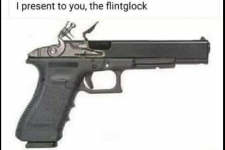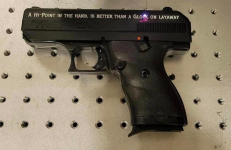Our recruit course of fire is the same one used by the RCMP at Depot. Our in-service for officers is very close to the RCMP Instructor level course of fire, but with slightly more liberal timings.
The old RCMP course of fire (5 stage), or one of the newer iterations from the past five years?
RCMP shooting was very marksmanship focused for a long time. There was lip service paid to stoppages and such, and a very basic level of proficiency achieved, but it wasn’t fighting with a gun.
After Mayerthorpe, the carbine program accelerated… Sadly not in time for Moncton. But in any case, the carbine program, once finally rolled out, came with a decent package. I believe Millbrook had a hand in its design, though of course as a five day course that started with the assumption a shooter had never handled a semiautomatic rifle before, it only took things so far. Still, it was fighting with a gun. After that, they then turned to the pistol program and rebuilt it from the ground up. It’s not too bad. Recognize that a reality the RCMP faces is the need to train and requalify members literally anywhere. Any qual must be shootable in a gravel pit with zero amenities. Most Mounties will get a training shoot once or twice a year, and a requal.
The annual qualification scored portion is much shorter and closer than it used to be. It’s based off a couple things. One is a no BS assessment of what police shootings normally look like. They’re usually close and quick. The qual focuses on a fast close engagement and 100% round accountability. However, part 2 of the qual, which changes each year, is a dynamic training portion that the member must safely complete, but that’s designed to get them comfortable with combat shooting. Again, bear in mind that they may only on the range a couple times a year. Part of the thinking is that in the old 5 stage qual, inevitably one or two people would have to reshoot every. Effing. Stage. Meanwhile another ten members sit there for much of a day picking their noses. The new approach results in a lot more range time and rounds downrange. It’s a far cry from ideal, but police forces tend not to have an overabundance of operational bodies, and unlike CAF, every workday is generally operational, with training an uncommon exception. Every bit of training for operational members takes members off the road or out from active investigative work.
My recollection from CAF (released two years ago), and going off 14 years PRes including a Kandahar tour- our pistol training was super limited. It appeared briefly in my DP2A Infantry Platoon Support Weapons course, and then again on my DP3A Small Arms Instructor course. We also shot it a bit on predeployment training. But nobody with much of a clue taught me pistol until I did my Urban Ops Instructor course. We got a solid week with the Browning, led by a dude who was scary good with handguns. That was the first time I ever began to develop any real confidence with a handgun.
I’ve since qualified as a pistol instructor for my organization, though I never ended up in a full time training unit- I got offered that gig on a Wednesday and then while mulling it offer, was offered a different gig that appealed to me stronger, so any of my pistol teaching on the policing side has been as an occasional augmented instructor. I can’t process any true expertise. I can help a beginner shooter become decent, and a decent shooter become a bit safer and a bit more likely to win a fight each time we go to the range. But I’m not one of those guys who achieves wizardry on the line. I remain much more effective and zoned-in with a C8 than a handgun.





